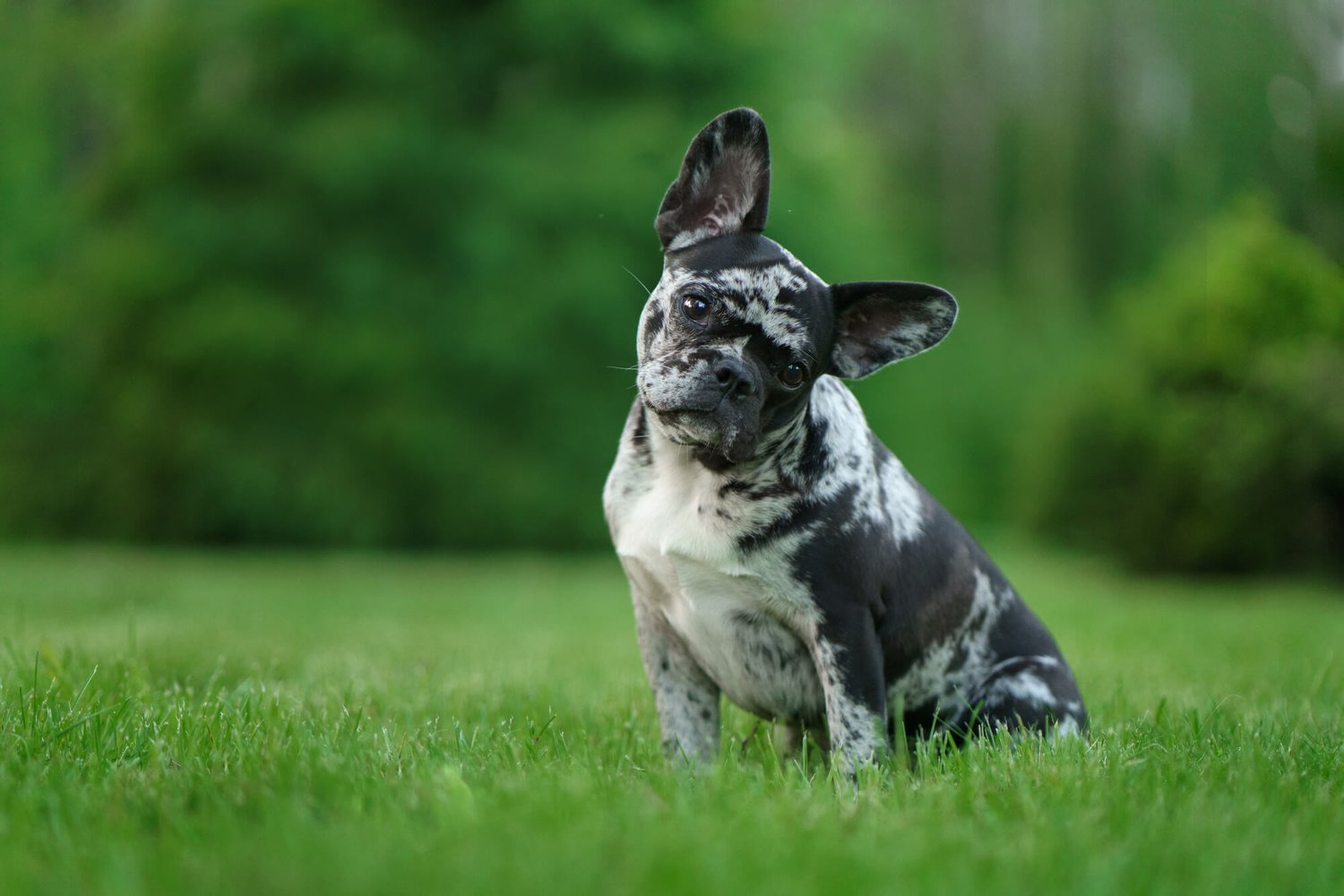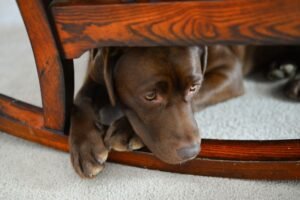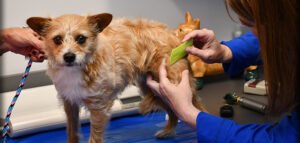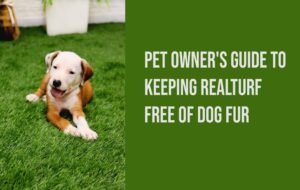Dogs should stay off the lawn for 24 to 48 hours after fertilization. This waiting period allows the chemicals to settle and reduces the risk of exposure. Lets read out: How Long After Fertilizing Can Dog Go on Lawn?
Maintaining a lush, green lawn often requires the use of fertilizers. While these products promote healthy grass growth, they can pose risks to pets. Many pet owners wonder about the safety of their dogs after applying fertilizers. Understanding how long to keep your dog off the lawn is crucial for their health.
Exposure to fertilizers can lead to various symptoms, from mild stomach upset to serious health issues. This guide will provide essential information on safe practices for your furry friend while keeping your lawn vibrant. Make informed choices for a healthy yard and a happy pet.
Table of Contents
Introduction To Lawn Fertilization And Pet Safety
Lawn fertilization keeps your grass healthy and vibrant. It also helps your lawn withstand pests and diseases. However, safety for your pets is vital during this process. Knowing when it’s safe for them to return to the yard is essential.
Why Fertilization Is Crucial For Lawn Health
Fertilization provides essential nutrients to grass. These nutrients support growth and improve resilience. Here are key reasons why fertilization is important:
- Improves soil quality: Fertilizers enrich the soil.
- Enhances color: A well-fertilized lawn looks lush and green.
- Promotes growth: Fertilizers encourage robust grass growth.
- Reduces weeds: A healthy lawn can outcompete weeds.
Regular fertilization helps maintain a beautiful lawn year-round. Healthy grass contributes to a safe play area for pets and children.
The Importance Of Pet Safety During Lawn Care
Pet safety is crucial during and after lawn care. Some fertilizers contain chemicals that can harm pets. Here are important safety tips:
- Choose pet-safe fertilizers: Look for organic options.
- Read labels: Check for pet safety warnings.
- Keep pets indoors: Keep them away during application.
- Wait before allowing pets outside: Follow the recommended waiting period.
Understanding these safety measures protects your furry friends. Always prioritize their well-being when caring for your lawn.
Types Of Lawn Fertilizers
Understanding the types of lawn fertilizers is essential for pet owners. Choosing the right fertilizer affects your lawn’s health. It also impacts your dog’s safety after treatment.
Organic Vs. Synthetic Fertilizers
Fertilizers fall into two main categories: organic and synthetic.
- Organic Fertilizers: Made from natural materials. They improve soil health and structure.
- Synthetic Fertilizers: Manufactured using chemicals. They provide quick nutrients but can harm soil over time.
Here’s a quick comparison:
| Type | Pros | Cons |
|---|---|---|
| Organic |
|
|
| Synthetic |
|
|
Understanding Slow-release Formulas
Slow-release fertilizers provide nutrients gradually. This helps maintain a steady nutrient level in the soil.
Key benefits include:
- Less risk of burning the lawn
- Longer-lasting effects
- Reduced need for frequent applications
For dog owners, slow-release formulas are safer. Dogs can return to the lawn sooner after treatment.
Potential Risks Of Fertilizers To Dogs
Fertilizers can harm dogs in various ways. Understanding these risks is important for pet owners. Keeping your furry friends safe should be a top priority.
Chemical Exposure And Toxicity
Fertilizers often contain chemicals that can be toxic to dogs. Here are some common toxic ingredients:
- Urea
- Ammonium nitrate
- Herbicides
Signs of chemical exposure include:
- Vomiting
- Diarrhea
- Excessive drooling
- Lethargy
Contact a vet immediately if your dog shows these symptoms.
Physical Harm From Granular Products
Granular fertilizers can pose physical risks. Dogs may ingest these granules. This can lead to serious health issues.
Granular products can cause:
- Choking hazards
- Stomach blockages
Watch for signs like:
- Abdominal pain
- Refusal to eat
- Frequent vomiting
Always supervise your dog after fertilizing your lawn.
.webp)
Credit: www.okvets.com
Reading Fertilizer Labels For Safety Information
Understanding fertilizer labels is crucial for your dog’s safety. These labels provide essential information about the product. Always check for safety guidelines before letting your dog on the lawn.
Key Symbols And Warnings To Look Out For
- Pet Safety Symbol: This symbol indicates whether the product is safe for pets.
- Warning Labels: Look for phrases like “Keep pets off until dry.”
- Hazard Symbols: Symbols may indicate toxicity. Avoid these products.
- Environmental Warnings: Some fertilizers may harm local wildlife.
Recommended Waiting Periods On Labels
| Fertilizer Type | Recommended Waiting Period |
|---|---|
| Granular Fertilizer | 24-48 hours |
| Liquid Fertilizer | 1-2 hours |
| Organic Fertilizer | 12-24 hours |
| Slow-Release Fertilizer | 48-72 hours |
Always follow the recommended waiting periods. This ensures your lawn is safe for your dog. Check the label each time you use fertilizer.
General Guidelines For Fertilizer Application
Applying fertilizer correctly is crucial for a healthy lawn. It ensures your grass grows well while keeping your pets safe. Follow these guidelines to optimize your lawn care.
Best Practices For Applying Fertilizer
- Choose the right fertilizer for your lawn type.
- Read the instructions on the fertilizer package.
- Use a spreader for even application.
- Avoid over-fertilizing. This can harm your lawn.
- Water the lawn after applying fertilizer.
Timing is essential. Apply fertilizer during the growing season. This usually happens in spring and early fall. Avoid fertilizing during extreme heat or drought.
Weather Considerations
| Weather Condition | Recommended Action |
|---|---|
| Rain | Wait until the rain stops to apply. |
| High Heat | Apply in the early morning or late evening. |
| Cold Weather | Delay application until temperatures rise. |
Always check the weather forecast before applying fertilizer. This prevents runoff and ensures the fertilizer works effectively.
Following these guidelines will help maintain a vibrant lawn while keeping your dog safe. Remember, wait the recommended time after fertilizing before allowing your pet back on the grass.
Safe Waiting Periods Post-fertilization
Knowing the safe waiting periods after fertilizing is crucial for pet owners. Fertilizers can contain chemicals harmful to dogs. Understanding these timeframes ensures a safe environment for your furry friend.
Timeframes For Common Fertilizer Types
Different fertilizers have varying safe waiting periods. Below is a table that outlines the recommended waiting times:
| Fertilizer Type | Safe Waiting Period |
|---|---|
| Granular Fertilizers | 24-48 hours |
| Liquid Fertilizers | 1-2 days |
| Organic Fertilizers | 1-3 days |
| Slow-Release Fertilizers | 2-3 days |
Check the product label for specific instructions. Follow these timeframes closely to protect your dog.
Adjusting Wait Times Based On Environmental Factors
Environmental conditions can change the safe waiting periods. Consider these factors:
- Rainfall: Heavy rain can wash away chemicals quickly. Wait at least 24 hours after rain.
- Temperature: High temperatures can speed up chemical absorption. Extend wait times in hot weather.
- Lawn Usage: If your lawn is frequently used, wait longer. Dogs can track in chemicals.
Always observe your lawn after fertilization. Ensure it looks dry and safe before allowing your dog out.
Creating A Dog-friendly Lawn Care Routine
Keeping your lawn beautiful and safe for dogs is essential. A proper lawn care routine protects your pet while maintaining your yard’s health. Here are some tips to create a dog-friendly lawn care plan.
Incorporating Pet-safe Products
Choose products that are safe for pets. Many fertilizers and pesticides can harm dogs. Look for organic or natural options. Here are some pet-safe products:
- Organic fertilizers
- Natural pest repellents
- Compost as a nutrient source
Always read labels before use. Make sure the product states it is pet-friendly. This helps protect your furry friend while keeping your lawn healthy.
Scheduling Lawn Care Around Your Dog’s Routine
Plan lawn care activities when your dog is not outside. This avoids any exposure to chemicals. Here’s how to schedule:
- Fertilize early in the morning.
- Water the lawn after fertilizing.
- Keep your dog inside for 24 hours.
Choose days when you can supervise your dog. This ensures they stay safe while you work on the lawn.
Use this simple table to keep track of your schedule:
| Day | Lawn Care Activity | Dog’s Activity |
|---|---|---|
| Monday | Fertilize | Indoor playtime |
| Tuesday | Water lawn | Walk in the park |
| Wednesday | Mow | Grooming session |
Using a routine keeps your lawn healthy. It also ensures your dog stays safe.
Aftercare: Post-fertilization Lawn Maintenance
After fertilizing your lawn, proper aftercare is essential. This helps to protect your furry friends and ensures a healthy lawn. Follow these guidelines to maintain your lawn safely.
Watering The Lawn To Reduce Risk
Watering is crucial after fertilization. It helps to wash away excess chemicals. Here’s how to do it:
- Water immediately: Apply water right after fertilizing.
- Use a sprinkler: A light sprinkling is effective.
- Avoid runoff: Water slowly to prevent runoff into drains.
Watering helps to:
- Activate fertilizer ingredients.
- Prevent potential harm to pets.
- Improve nutrient absorption in the soil.
Monitoring Your Lawn’s Health And Safety
Keep an eye on your lawn after fertilization. Regular checks ensure it remains healthy:
- Look for signs: Check for discoloration or burning.
- Observe pet behavior: Watch for unusual reactions.
- Check moisture levels: Ensure the lawn isn’t too dry.
Signs of a healthy lawn include:
| Signs | Description |
|---|---|
| Green color | Lawn appears vibrant and lush. |
| Even growth | Grass grows uniformly across the area. |
| No pests | No signs of insects or disease. |
Regular maintenance ensures your lawn stays safe for pets.
Recognizing And Responding To Fertilizer Poisoning In Dogs
Fertilizer can be harmful to dogs. Knowing the signs of poisoning is crucial. Quick action can save your dog’s life. Here’s how to identify and respond effectively.
Symptoms To Watch For
Watch for these symptoms in your dog:
- Vomiting: Frequent or severe vomiting.
- Diarrhea: Loose or bloody stools.
- Excessive drooling: Unusual amounts of saliva.
- Lethargy: Lack of energy or interest.
- Loss of appetite: Refusal to eat food.
- Abdominal pain: Signs of discomfort or bloating.
- Difficulty breathing: Rapid or labored breathing.
Recognizing these signs early is essential. Immediate action can reduce risks.
Immediate Steps And When To Contact A Vet
Follow these steps if you suspect poisoning:
- Remove your dog from the treated area.
- Check your dog’s mouth for fertilizer residue.
- Rinse your dog’s mouth with water.
- Do not induce vomiting unless advised by a vet.
Contact a vet immediately if:
- Symptoms persist or worsen.
- Your dog ingests a large amount of fertilizer.
- Your dog shows severe symptoms like seizures.
Timely veterinary care is vital. Your dog’s health depends on quick action.

Credit: www.groundsguys.com
Alternatives To Traditional Fertilizers
Many dog owners seek safe lawn care options. Traditional fertilizers can harm pets. Consider pet-friendly alternatives that promote a healthy lawn. These options are safe for your furry friends.
Using Pet-friendly Lawn Care Products
Many products are available that do not harm pets. Here are some pet-friendly lawn care options:
- Organic fertilizers: Made from natural ingredients.
- Corn gluten meal: Acts as a natural weed preventer.
- Fish emulsion: Provides nutrients without harmful chemicals.
- Seaweed extract: Rich in micronutrients.
Always check labels. Look for non-toxic certifications. Choose products specifically marked as safe for pets.
Natural Lawn Care Techniques
Natural techniques keep lawns green and safe. Here are effective methods:
- Composting: Use kitchen scraps to enrich the soil.
- Mulching: Helps retain moisture and suppress weeds.
- Rotating grass types: Plant diverse grass types for resilience.
- Watering wisely: Water deeply but less frequently.
These methods improve soil health. They create a beautiful lawn without chemical risks. Your dog will thank you!
Conclusion: Balancing Lawn Care And Pet Safety
Maintaining a healthy lawn is essential for your home. Balancing this with your pet’s safety is crucial. Understanding the right time to let your dog back on the lawn is key. Following safe practices ensures a happy and healthy environment for all.
Summary Of Safe Practices
Here are some safe practices to keep in mind:
- Wait after fertilization: Keep pets off for at least 24-48 hours.
- Choose pet-safe fertilizers: Select organic or natural options.
- Water the lawn: Watering helps to wash away chemicals.
- Read product labels: Follow directions carefully for safety.
- Mark treated areas: Use signs to remind others.
Encouraging Responsible Fertilization
Responsible fertilization protects both your lawn and pets. Here are some tips:
- Plan your fertilization schedule: Fertilize during times your dog can stay indoors.
- Use eco-friendly products: Choose options that are safe for pets and the environment.
- Educate family members: Ensure everyone knows the rules about pet safety.
- Monitor lawn health: Assess your lawn regularly to reduce chemical use.
- Consult professionals: Seek advice from lawn care experts for safe practices.
Balancing lawn care with pet safety creates a healthy environment. Following these guidelines helps protect your furry friends while maintaining a beautiful lawn.
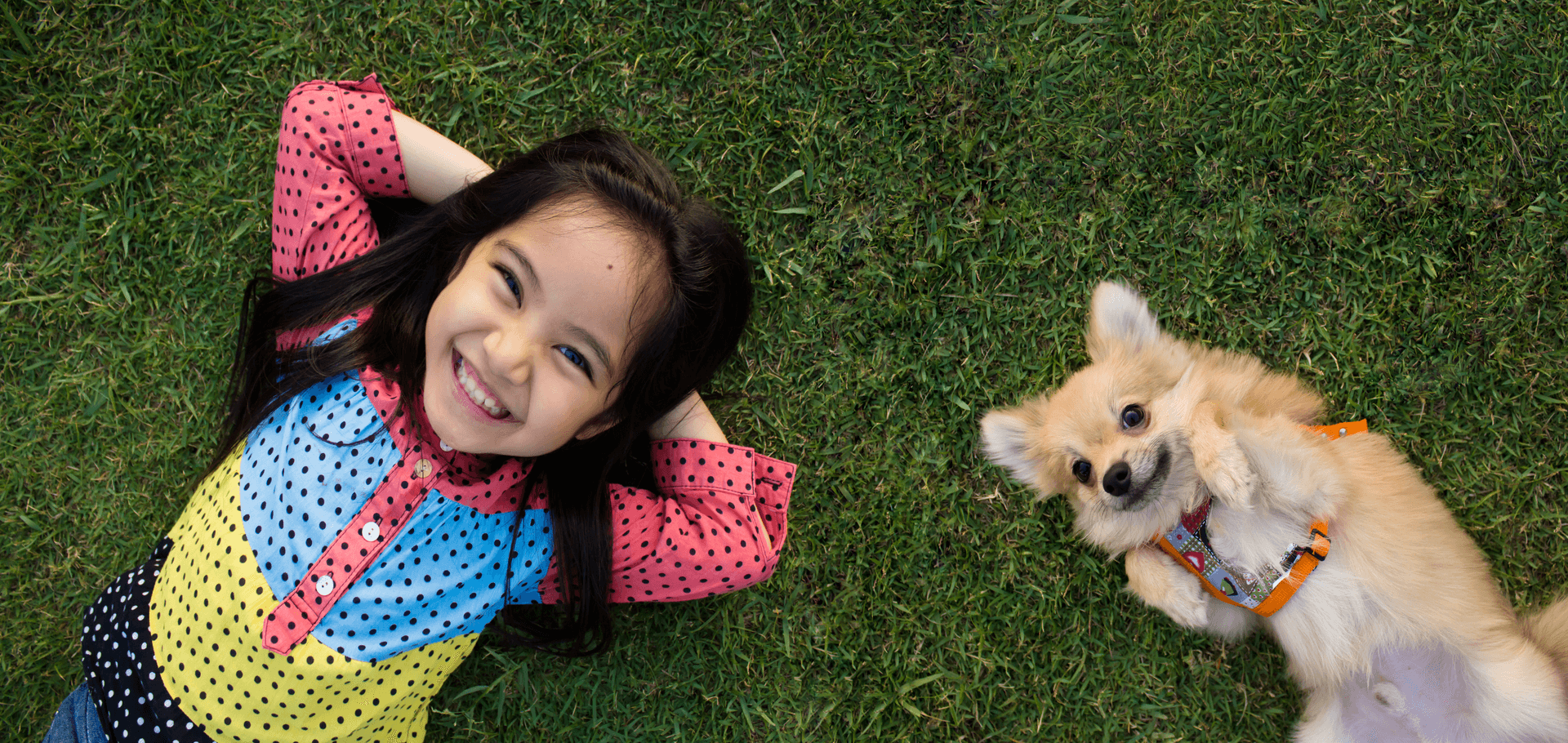
Credit: chorbie.com
Frequently Asked Questions
How Soon Can Dogs Walk On Fertilized Grass?
Dogs should ideally wait 24 to 48 hours after fertilization before walking on treated grass. This allows the fertilizer to settle and prevents any potential harm to your pet. Always check the product label for specific recommendations, as some fertilizers may require longer waiting periods.
What Happens If My Dog Walks On Fertilized Lawn?
If your dog walks on fertilized grass too soon, they may experience mild gastrointestinal issues or skin irritation. Fertilizers contain chemicals that can be harmful if ingested or absorbed through the skin. Always supervise your pet and ensure they stay off the lawn until it’s safe.
Is Lawn Fertilizer Harmful To Dogs?
Many lawn fertilizers can be harmful to dogs if ingested. They contain chemicals that may cause vomiting, diarrhea, or more severe health issues. It’s crucial to keep pets away from freshly treated areas and consult your vet if you suspect ingestion.
How Can I Keep My Dog Off The Lawn?
To keep your dog off the lawn after fertilization, consider using barriers like fencing or temporary signs. You can also redirect their attention with toys or treats in a different area. Consistent training will help reinforce the behavior you want.
Conclusion
Fertilizing your lawn is crucial for its health, but timing matters. Waiting at least 24 to 48 hours ensures your dog’s safety. Always check the specific product guidelines for best practices. A healthy lawn benefits everyone, including your furry friends.
Keep them safe and enjoy your vibrant outdoor space together.
